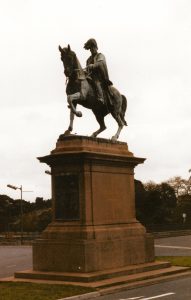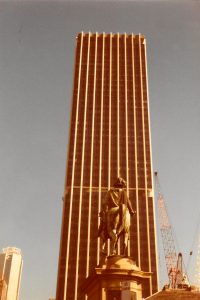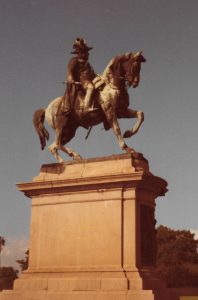- CountryAustralia
- Town:Sydney
-
Year of creation:1922
- Rider(s):Edward Vll
(1841 –1910) was King of the United Kingdom of Great Britain and Ireland and Emperor of India from 1901 until his death in 1910.
The eldest son of Queen Victoria and Prince Albert of Saxe-Coburg and Gotha, Edward was related to royalty throughout Europe. He was Prince of Wales and heir apparent to the British throne for almost 60 years. During the long reign of his mother, he was largely excluded from political power, and came to personify the fashionable, leisured elite. He travelled throughout Britain performing ceremonial public duties, and represented Britain on visits abroad. His tours of North America in 1860 and the Indian subcontinent in 1875 were popular successes, but despite public approval, his reputation as a playboy prince soured his relationship with his mother.
As king, Edward played a role in the modernisation of the British Home Fleet and the reorganisation of the British Army after the Second Boer War. He reinstituted traditional ceremonies as public displays and broadened the range of people with whom royalty socialised. He fostered good relations between Britain and other European countries, especially France, for which he was popularly called “Peacemaker”, but his relationship with his nephew, the German Emperor Wilhelm II, was poor. He died in 1910 in the midst of a constitutional crisis that was resolved the following year by the Parliament Act 1911, which restricted the power of the unelected House of Lords.
(source: Wikipedia)
- Sculptor(s):Brock, Thomas
-
Within a few days of King Edward’s death, a proposal was presented to the Lord Mayor of Sydney for the erection of a memorial to the late King. This proposal, however, came to nothing, and it was another 12 months before the first steps were taken towards erecting the memorial in Sydney. The statue was funded by public subscription and contributions from the City of Sydney and the State Government. The outbreak of WW 1 made it impossible to have the statue casted. Following the end of the war, an attempt was made to revive interest but the final result was a less grand scale.
Edward VII has two equestrian statues in Australia, one in Melbourne by Bertram Mackennal (1920) and the other one in Sydney, by Thomas Brock (1922).
It should be noted that the Melbourne statue very much resembles the Kolkata statue (dating from 1916). Did Mackennal use the same mould?
Own pictures dating from 1983







